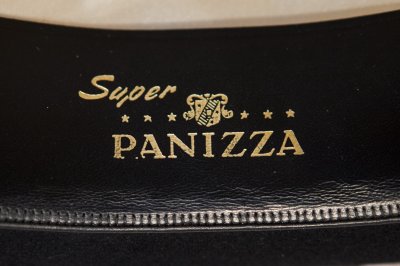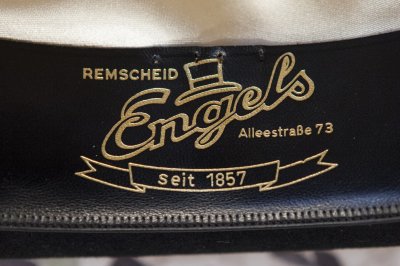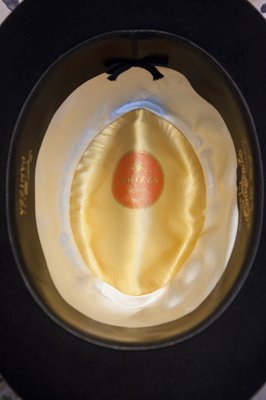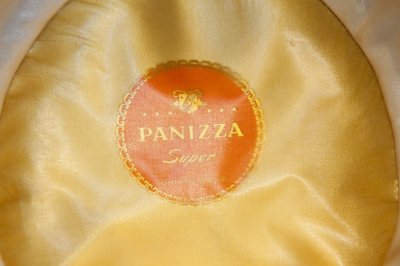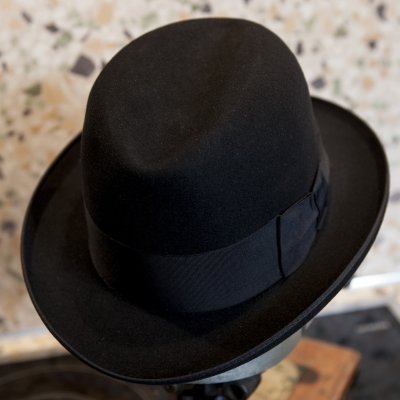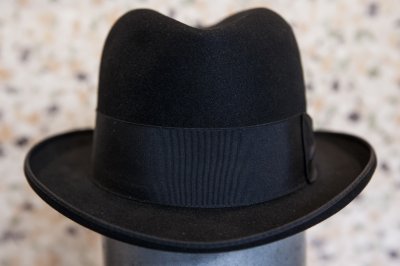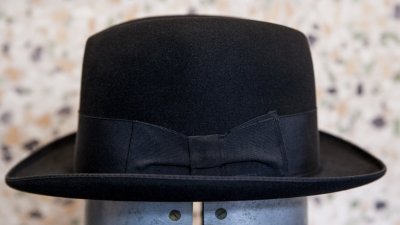While that is true of course, there must have been something to it, otherwise the Germans wouldn't have come up with the term. The word may have come in use because the employers would wear this kind of hat to work, while the employees would wear other headwear, like soft felt hats or more commonly caps (for manual labourers). The hat style for workers in other professions would more likely be the bowler. My idea is that a lot of the homburgs survive because they were used as "sunday hats". What better way to show respectability than to wear a hat the boss would wear, but would be too expensive to wear every day. That certainly seems to be the case here in Holland, where the men would put on their sunday best, put on their best hat and go to church. Which would also explain why black is the most common colour, being austere enough for church (someone once termed that as "protestant chromophobia"). The "Wörterbuch der deutschen Umgangssprache" (dictionary of common language) gives as an explanation: "Herrenhut mit breiter steifer Krempe; schwarzer Herrenhut; besonders wertvoller Hut. Klassenkämpferische Bezeichnung seit 1920" (men's hat with wide stiff brim; black man's hat; especially valuable hat. Class-struggle name since 1920). The term seems to have been used idiomatic as well; I found a few references where "an den Arbeitgeberhut gekommen" means to have made it. Who would have thought it?The only problem with this is that almost all hats look like Homburgs if you go back to 1920s. You also had lower price point hats that share style.
Want to buy or sell something? Check the classifieds
-
The Fedora Lounge is supported in part by commission earning affiliate links sitewide. Please support us by using them. You may learn more here.
You are using an out of date browser. It may not display this or other websites correctly.
You should upgrade or use an alternative browser.
You should upgrade or use an alternative browser.
Homburg Nation
- Thread starter Garrett
- Start date
It's Mayserwegeners wonderful movie in the seprarate thread about the Ghiffa hat Museum that made me have a look at the hat collection for Panizza's. I only have one left (sold this one because it was way too big for me). It's a Panizza homburg (the Italians would probably call it lobbia) in grey, size 59, 5,5cm brim and 11cm high at the pinch. Beautiful felt and high quality workmanship all around. My guess is 1960's. posted this one in the Italian Brand Hatters thread as well.
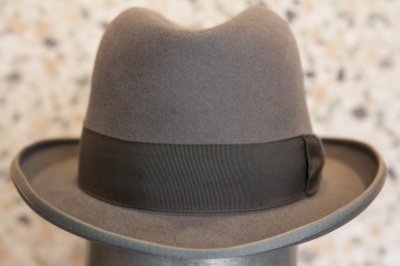
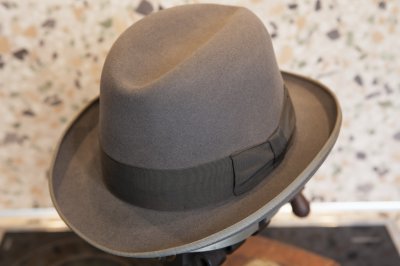
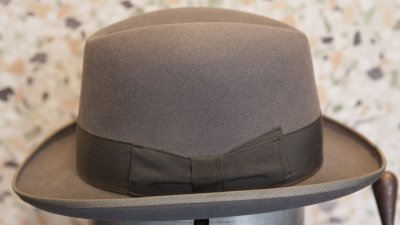
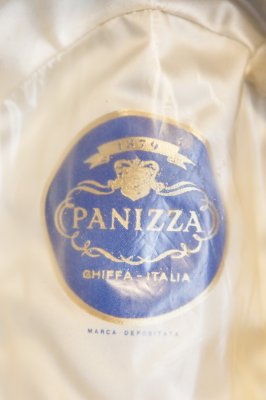
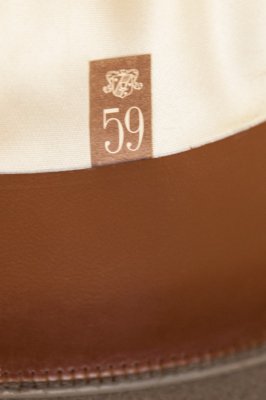
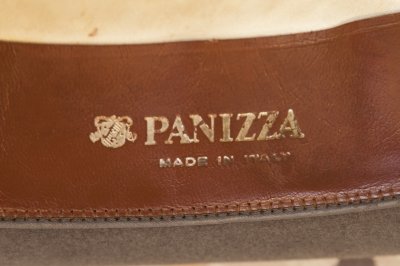
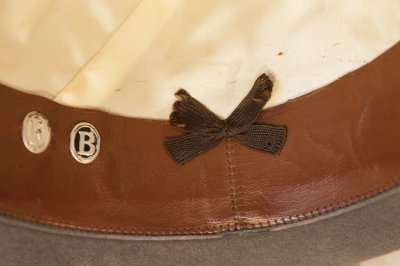
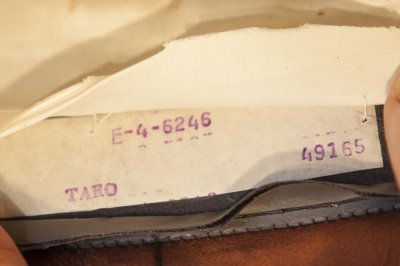








- Messages
- 17,647
- Location
- Maryland
Not all the men in city / town street scene photos (from the 1930s and earlier) wearing Curled Brim Soft Felt Hats are employers. There were very low price point hats with Homburg like brims. Pretty much all pre 1930 German Soft Felt Dress hats had curled brims. It doesn't make sense for a laborer to wear such a hat (maybe a worn out one) to work but he could wear one to church on Sunday or special event outside of work. A man working at a retail establishment (or a similar environment) would certainly wear such a hat in the 1920s and maybe even into the 1930s as Snap Brims become more popular. Probably not a Borsalino or Mayser but a low price point wool or fur felt hat with similar style (I have many examples). My feeling is the word is based on class struggle and didn't apply to a large section of men that wore such hats (there is just too much evidence to the contrary). There are some good examples of lower price point Fur Felt (Wool in most cases a lower price point) Homburg like hats (some very sporty) in this Janyška thread. These are more Everyday Man Hats that only survive because they are New Old Stock (NOS).While that is true of course, there must have been something to it, otherwise the Germans wouldn't have come up with the term. The word may have come in use because the employers would wear this kind of hat to work, while the employees would wear other headwear, like soft felt hats or more commonly caps (for manual labourers). The hat style for workers in other professions would more likely be the bowler. My idea is that a lot of the homburgs survive because they were used as "sunday hats". What better way to show respectability than to wear a hat the boss would wear, but would be too expensive to wear every day. That certainly seems to be the case here in Holland, where the men would put on their sunday best, put on their best hat and go to church. Which would also explain why black is the most common colour, being austere enough for church (someone once termed that as "protestant chromophobia"). The "Wörterbuch der deutschen Umgangssprache" (dictionary of common language) gives as an explanation: "Herrenhut mit breiter steifer Krempe; schwarzer Herrenhut; besonders wertvoller Hut. Klassenkämpferische Bezeichnung seit 1920" (men's hat with wide stiff brim; black man's hat; especially valuable hat. Class-struggle name since 1920). The term seems to have been used idiomatic as well; I found a few references where "an den Arbeitgeberhut gekommen" means to have made it. Who would have thought it?
http://germanaustrianhats.invisionzone.com/index.php?/topic/194-janyška-cie/
Last edited:
- Messages
- 12,384
- Location
- Albany Oregon
Beautiful, it looks like a pristine example.It's Mayserwegeners wonderful movie in the seprarate thread about the Ghiffa hat Museum that made me have a look at the hat collection for Panizza's. I only have one left (sold this one because it was way too big for me). It's a Panizza homburg (the Italians would probably call it lobbia) in grey, size 59, 5,5cm brim and 11cm high at the pinch. Beautiful felt and high quality workmanship all around. My guess is 1960's. posted this one in the Italian Brand Hatters thread as well.
View attachment 71112 View attachment 71113 View attachment 71114 View attachment 71115 View attachment 71116 View attachment 71117 View attachment 71118 View attachment 71119
- Messages
- 12,384
- Location
- Albany Oregon
It is great to see such a classic style being made in the mid 1960s. The brim binding appears to be not as wide and pronounced. A quick detail shot of the edge binding?On the subject of Panizza Homburg hats: here's the other one (I still have this one). Super Panizza homburg in black, size 56, 5cm brim, 10,5cm crown at the pinch. The brim curl not as pronounced as with other homburgs. Very high quality hat and super felt. Dated on the sweatband 29 oktober 1964.
View attachment 71120 View attachment 71121 View attachment 71122 View attachment 71123 View attachment 71124 View attachment 71125 View attachment 71126 View attachment 71127 View attachment 71128
Steve, thanks. Appreciate your input and I can always use a good excuse to have a look at the Janyska hats. I don't disagree with you on how widespread the curled brim hats were in the twenties and thirties, but there must have been something about them that caused them to be especially associated with employers, at least in Germany. It's not a term, as far as I know, that was used elsewhere in Europe. It's that part of the puzzle that's missing, for me at least.Not all the men in city / town street scene photos (from the 1930s and earlier) wearing Curled Brim Soft Felt Hats are employers. There were very low price point hats with Homburg like brims. Pretty much all pre 1930 German Soft Felt Dress hats had curled brims. It doesn't make sense for a laborer to wear such a hat (maybe a worn out one) to work but he could wear one to church on Sunday or special event outside of work. A man working at a retail establishment (or a similar environment) would certainly wear such a hat in the 1920s and maybe even into the 1930s as Snap Brims become more popular. Probably not a Borsalino or Mayser but a low price point wool or fur felt hat with similar style (I have many examples). My feeling is the word is based on class struggle and didn't apply to a large section of men that wore such hats (there is just too much evidence to the contrary). There are some good examples of lower price point Fur Felt (Wool in most cases a lower price point) Homburg like hats (some very sporty) in this Janyška thread. These are more Everyday Man Hats that only survive because they are New Old Stock (NOS).
http://germanaustrianhats.invisionzone.com/index.php?/topic/194-janyška-cie/
Daniele Tanto
I'll Lock Up
- Messages
- 4,326
- Location
- Verona - Italia
On the subject of Panizza Homburg hats: here's the other one (I still have this one). Super Panizza homburg in black, size 56, 5cm brim, 10,5cm crown at the pinch. The brim curl not as pronounced as with other homburgs. Very high quality hat and super felt. Dated on the sweatband 29 oktober 1964.
Steur, I have some French hats in the same shape with very tiny ribbon on the bounded brim or without it
They are old memories of EU hats before the war as Steve stated in his analysis on the European shapes before the thirties.
This Panizza is the better Italian lobbia I see in the last months.
Complimenti!
@FedOregon: beautiful. Nice wide bow and by the looks of it the binding has hidden stitching. Nice!
Featured products
-
 John Lofgren Monkey Boots Shinki Horsebuttt - $1,136 The classic monkey boot silhouette in an incredibly rich Shinki russet horse leather.
John Lofgren Monkey Boots Shinki Horsebuttt - $1,136 The classic monkey boot silhouette in an incredibly rich Shinki russet horse leather. -
 Grant Stone Diesel Boot Dark Olive Chromexcel - $395 Goodyear welted, Horween Chromexcel, classic good looks.
Grant Stone Diesel Boot Dark Olive Chromexcel - $395 Goodyear welted, Horween Chromexcel, classic good looks. -
 Schott 568 Vandals Jacket - $1,250 The classic Perfecto motorcycle jacket, in a very special limited-edition Schott double rider style.
Schott 568 Vandals Jacket - $1,250 The classic Perfecto motorcycle jacket, in a very special limited-edition Schott double rider style.
Daniele, thanks. This in fact one of those hats which is too nice for its own good. I try to keep this one in pristine shape and it doesn't get much wear because of it (I have several other homburg/lobbia hats I can wear everyday and not worry about).Steur, I have some French hats in the same shape with very tiny ribbon on the bounded brim or without it
They are old memories of EU hats before the war as Steve stated in his analysis on the European shapes before the thirties.
This Panizza is the better Italian lobbia I see in the last months.
Complimenti!
- Messages
- 17,647
- Location
- Maryland
If this was the case there would have been no hat industry. These Curl Brimmed Soft Felt hats were mostly called Mode Hut or Fashion Hat. Not just employers wore such hats. I haven't seen this term used in German Hat trade publications. Of course a rich owner of a company is going to have more expensive clothing than his accountant or some guy working in the sales department but the hat styles were similar. They are city dress style hats so probably a farmer would only wear such a hat to church or some other special event. I am not disputing there was such a term and that some people / groups thought this way. It was same in America and still present on this board to some degree.Steve, thanks. Appreciate your input and I can always use a good excuse to have a look at the Janyska hats. I don't disagree with you on how widespread the curled brim hats were in the twenties and thirties, but there must have been something about them that caused them to be especially associated with employers, at least in Germany. It's not a term, as far as I know, that was used elsewhere in Europe. It's that part of the puzzle that's missing, for me at least.
Agreed. It was probably not a widely used term and perhaps only used by certain groups or people for political reasons. It did stick around however at least until the sixties (the publications I found them in were from the sixties). Perhaps in the same way that the bowler was considered a banker's hat in England in the post-war period? At least an interesting footnote in hatting history.If this was the case there would have been no hat industry. These Curl Brimmed Soft Felt hats were mostly called Mode Hut or Fashion Hat. Not just employers wore such hats. I haven't seen this term used in German Hat trade publications. Of course a rich owner of a company is going to have more expensive clothing than his accountant or some guy working in the sales department but the hat styles were similar. They are city dress style hats so probably a farmer would only wear such a hat to church or some other special event. I am not disputing there was such a term and that some people / groups thought this way. It was same in America and still present on this board to some degree.
- Messages
- 17,647
- Location
- Maryland
Yes later there is less of a connection to the 1920s when Homburg like hats were pretty much the norm for City Dress wear. There were more exclusive / formal models back in that time but you could also purchase such hats at the lowest price point. It wouldn't be out of the norm for a male officer worker of the 1920s (also the 1930s) to wear a Homburg like hat. Stiff Felts were also available from the highest to lowest price point. I have some really exclusive Stiff Felts from that time period but I also have some made out of Wool that look great but were not expensive hats. What is interesting is the original Edward VII Homburg was not considered a formal hat. It was outrageous for him to wear one in a non casual setting.Agreed. It was probably not a widely used term and perhaps only used by certain groups or people for political reasons. It did stick around however at least until the sixties (the publications I found them in were from the sixties). Perhaps in the same way that the bowler was considered a banker's hat in England in the post-war period? At least an interesting footnote in hatting history.
Last edited:
- Messages
- 12,384
- Location
- Albany Oregon
Yes, really fine.Redfokker, thanks. Here's a shot of the brim binding, which is indeed not as wide as usual.
View attachment 71155
Daniele Tanto
I'll Lock Up
- Messages
- 4,326
- Location
- Verona - Italia
I thought I had found another homburg or "diplomatique" made in France to add to my collection, but unfortunately the Mossant is too small for my head

It is the first time I find a homburg hat made in France without lining

and experience with others hats of the period make me guess, it was built, almost certainly, before World War II

It is a homburg tone on tone with all the colored ribbons matching with the color of the felt

The dimensions are average and very accurate construction

It is lightweight and made of fur malleable medium felt

Sold in Rennes

It was contained in its original box and in not very good condition
Seee the paper label not glued but stichted

The dimensions are the same of French "Diplomatique" classic hats like this: curled brim at 5.5 and crown, low point at 11 cm.

Size is 58 cm.

It is the first time I find a homburg hat made in France without lining

and experience with others hats of the period make me guess, it was built, almost certainly, before World War II

It is a homburg tone on tone with all the colored ribbons matching with the color of the felt

The dimensions are average and very accurate construction

It is lightweight and made of fur malleable medium felt

Sold in Rennes

It was contained in its original box and in not very good condition
Seee the paper label not glued but stichted

The dimensions are the same of French "Diplomatique" classic hats like this: curled brim at 5.5 and crown, low point at 11 cm.

Size is 58 cm.
- Messages
- 10,937
- Location
- vancouver, canada
That is a beauty. I have one that is similar but has the satin lining.
- Messages
- 17,647
- Location
- Maryland
Daniele, Again a great find!
Similar threads
- Replies
- 19
- Views
- 2K
Staff online
-
scotraceHead Bartender
Members online
- Olumin
- Cskarev
- ih777
- Tom71
- BDL
- AerGuitar
- Behemott
- TTThijs
- Steve1857
- bnisland
- Funky_H
- barthestole
- scotrace
- Fading Fast
- Pellie
- Stu K 323
- Mrkurtz
- MikeP
- thebruin
- G007
- Peacoat
- Randomuser
- Leather Walker
- Tyler Durden
- Jonanah
- photo2u
- SpruceMoose
- spectre6000
- Daniele Tanto
- Haitham
- DLBERNAU
- Nine Inch Males
- Ticklishchap
- Grayland
- unhatted
- panigale
- Egalter
- braindeath
- ctdair
- karmaone
- gily
- TartuWolf
- mattmostlydragons
- joezam713
- leather.be
- bn1966
- cbez
- JasonY
- Tiki Tom
- Bfd70
Total: 2,679 (members: 98, guests: 2,581)
